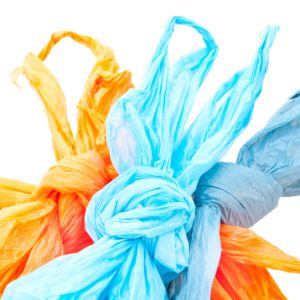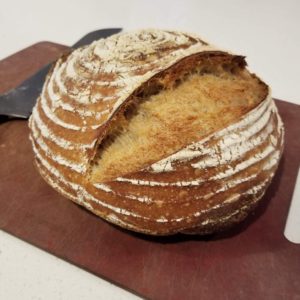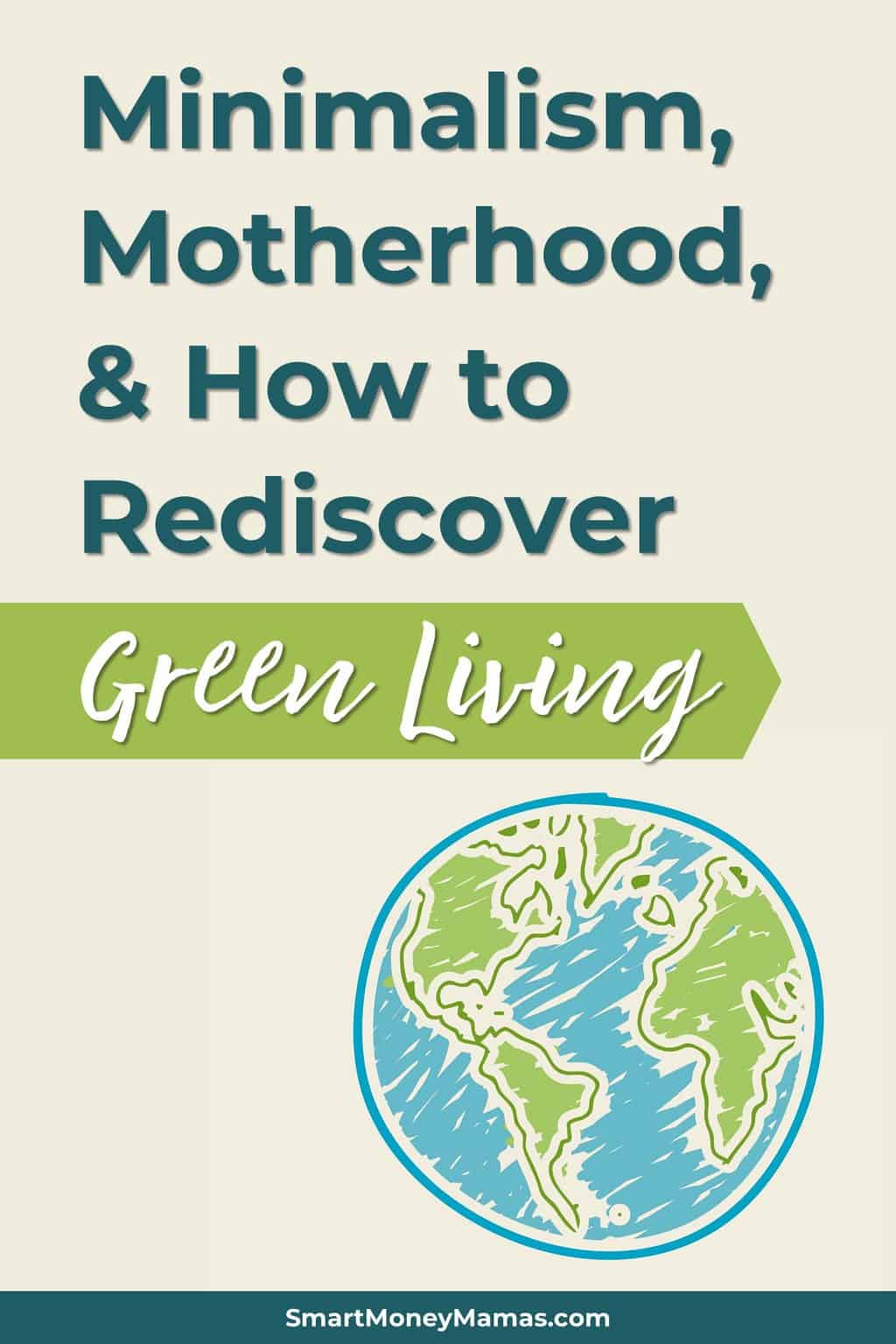I like to think that I was a minimalist before it was cool. With a background in architecture and design, I have always appreciated the elegant lines of mid-century modern furniture, and the clean aesthetic of many Japanese homes.
While studying at the Rhode Island School of Design, a professor once instructed me to “only buy art that you can’t live without.” This idea resonated with me so in 2012, when we relocated from Rhode Island to San Francisco for my now husband’s career, we brought only what could fit in my Toyota Corolla – including a letterpress print from a dear friend and two beloved paintings.
In 2013 we bought our first house – a nearly hundred-year-old 1,600 square foot craftsman. After almost a decade of that strange sense of placelessness that comes with dorm and apartment living in your early twenties, it was the first time since my childhood that I felt at home.
And we began to collect things.
Mid-century wood furniture, some Heath Ceramics I love, some meaningful art. But also just stuff. I noticed the accumulation of clothing I didn’t wear, decorative objects that didn’t evoke any feeling, and closets full of things I never used and didn’t need.
Coming Face-to-Face With Our Stuff

Then, this past December, we left the Bay Area for Denver, Colorado. I was excited by the promise of more space for our family, which had expanded to include a very active three-year-old son, a curious nine-month-old daughter, and two middle-aged dachshunds.
I also saw this as an opportunity to live more intentionally, further paring down our belongings to start fresh in our new home with less stuff.
As we prepared to move, I minimized everything I could. The Corolla that six years earlier had carried all our worldly belongings across the country took nearly a dozen trips to our local thrift store brimming with clothing and household items that didn’t spark joy.
As the stuff left, I found that less visual clutter made my home feel more serene. Less stuff gave me more mental space for myself, my children, and my chores. I also noticed that the more clutter I removed from my life, the more I paused before deciding to bring something in. My one to two Amazon deliveries a week slowed to one a month, or fewer. Trips to Target became few and far between.

But even though I had minimized the amount of ‘stuff’ in our lives and lessened our consumption, I found myself encountering increasingly bleak research on the health of our planet. When I did shop, I felt overwhelmed by the vast aisles of plastic packaging. Of cheap consumer items that would be used once before spending the next thousand years sitting in our landfills. If they didn’t find their way into our oceans.
So, harkening back to the mantra I learned in elementary school, I remembered that recycling was the last step in waste reduction. We have to focus instead on reduction and reuse. While I have a long way to go to live a zero waste life, here are some easy ways I have found to significantly reduce my plastic waste and carbon footprint.
RELATED: 7 Ways We Keep a Green Home for Less
Things to Ditch & Reduce Your Carbon Footprint
Single-use or disposable plastics are defined as items that are only used once before being recycled or – as is much more often the case – thrown away. Experts estimate that only 10% of all plastics ever created have been recycled. And, with China, who previously processed much of the world’s recycling, refusing to accept foreign materials more cities are reducing or ending their recycling programs. With nowhere else to go, more waste ends up in landfills.
Reduce your use of single-use plastics and, with it, your carbon footprint with these simple steps.
Plastic Straws and Cup Lids
 Americans use an estimated 200-300 million straws each day. Straws are rarely recyclable and are one of the most commonly found types of trash in our oceans and waterways. When dining in a restaurant where you fill your own beverage skip the lid and straw. If there is a server, simply decline a straw in your water or beverage.
Americans use an estimated 200-300 million straws each day. Straws are rarely recyclable and are one of the most commonly found types of trash in our oceans and waterways. When dining in a restaurant where you fill your own beverage skip the lid and straw. If there is a server, simply decline a straw in your water or beverage.
Pro tip: Make sure to tell the server you don’t want a straw when you order your drink and don’t let them leave one if you don’t plan on using it. In many restaurants, if they leave the straw on the table, they have to throw it out. Whether you use it or not.
Single-Use Bags
Americans use 100 billion plastic bags each year, most of which are used for about 12 minutes. While it can take some effort to make it a habit, we now bring our own shopping bags to grocery stores, Costco, Target, and more.
After realizing we were still bringing home more plastic than we were comfortable with – in the form of produce bags – we decided to go even further by purchasing a set of reusable mesh bags. If you aren’t ready to go that far, remember that fruits and vegetables that have a peel or that you plan to wash can simply be placed in your cart to save a bag.
Bottled Water
Only 1 in 5 water bottles ever makes it to a recycling plant. The rest spend the next 400 years breaking down into microplastics that, in a sad twist, are now found in 93% of bottled water.
Ditching bottled water is easy, and if you eliminate just one bottle a day, you can save $3,400 over the next 10 years. Opt to bring your own reusable bottle, use a drinking fountain, or request a paper cup for water (hold the straw) when you dine out.
Toiletries
If you look around the bathroom of any home, you most likely find tons of single-use plastics. Shampoo and conditioner bottles, toothpaste tubes, toothbrushes, and disposable razors to name a few. These products contain a lot of water, and as a result are heavy, expensive to ship, and must be packaged in plastic.
Luckily, there are ways to combat this waste and also save money.
I recently switched to bar shampoo and conditioner for environmental reasons, but I was shocked to discover softer hair and less breakage. After a lifetime daily washings, I can now shampoo every other day without looking oily. Some other replacements I love are toothpaste tabs, biodegradable bamboo toothbrushes, and safety razors.
Pre-Packaged Foods

Packaged foods not only generate a massive amount of waste, but also tend to be high in refined sugars, sodium, and unhealthy fats. Before grabbing a snack that is packaged in plastic, consider whether there is a waste-free alternative.
For my family this means that we stopped buying pre-bagged salad mixes in favor of a head of lettuce and other fresh produce, bring glass mason jars to fill up with trail mix, granola, and chocolate in the bulk bin section of our local grocery store, and started making things I used to purchase, like brownies, pasta, bread, and yogurt. I have been shocked to find that it takes me the same amount of time to bake from scratch as it did to assemble a boxed mix – and the flavor is far superior.
Plastic Toys
With a recent study showing that fewer toys are actually better for children’s focus, creativity, and quality of play there is no better time to minimize the incredible volume of plastic toys found in most households in lieu of a few high-quality alternatives. We love open-ended toys (a toy that can be played with in many ways) like blocks, legos, trains, art supplies, play silks, and dress up clothes – paired with lots of outdoor play to allow children to foster their imagination.
Party Favors
When did we decide that we needed to send children home from every party with a bag full of dollar store junk? We all know that our kids lose interest in plastic party favors before the car ride home is even over. So, if you must provide a favor, opt for a book or homemade treat.
Cellophane Wrap and Ziplock Bags
This was one change that I was resistant to at first. We were using a lot of ziplock bags and saran wrap, both of which are not recyclable. I knew there had to be a better way, but they were just so darn convenient. Once I committed to making a change, I felt silly at how long it took me.
We swapped in reuseable Bee’s Wrap for cellophane and leaned on our Pyrex storage containers more. We found by putting food in a glass container versus a bag, we were able to better keep track of what was in our fridge and minimize food waste. If you can’t live without Ziplock bags, consider these plastic-free reusable alternatives.
Fast Fashion
The average person throws away 70 pounds of clothing and shoes each year. Synthetic fabrics also shed microplastics with every wash. To minimize my family’s impact, we focus on high quality, timeless pieces, made from natural materials. As with my approach to art, I stopped buying clothes unless I truly loved the way they made me feel, and it filled a practical need within my wardrobe.
RELATED: 10 Ways to Reduce Waste & Save Money
Other Strategies to Lead a Greener Life
- Choose plastic-free alternatives whenever possible – Cardboard, paper, fabric, and glass are all more eco-friendly alternative to plastic packaging.
- Run your dishwasher – Hand washing your dishes uses up to 27 gallons of water, whereas an Energy Star rated dishwasher uses a mere 3 gallons a load. While you’re at it, skip the pre-washing too. Most modern dishwashers can easily manage a bit of extra food. Loading and unloading the dishwasher is also a great chore for young children. (I bet I won’t have to convince you of this one.)
- Compost and recycle – If you have gotten this far and you aren’t already composting and recycling, it should be your first step. If you don’t have access to commercial composting, it’s very easy to start composting at home.
- Plant a garden – Put all that great compost to good use and grow your own vegetables. We garden and keep a small flock of backyard chickens and are able to heavily supplement our grocery bill in spring through fall. Homegrown produce tastes better, and it’s incredibly rewarding to prepare a meal with ingredients from your own yard. We love square foot gardening to get the best yield off a modest space.
Commit to Making Baby Steps To Protect the Planet
I think of my journey to live a more minimalist and waste-free lifestyle as an ongoing evolution. As I become comfortable with each incremental change, I look for the next source of waste or clutter that I can tackle. Just like learning to be more financially responsible or eat healthier, you don’t have to make all the changes at once. Incremental changes make it easier for new habits to stick.
As you embark on your own journey, the most critical step is to always consider whether your need for something outweighs the environmental downsides. Think through the frugal consumption decision process, you’ll save more and consume less. (And taking a moment to think about each purchase will lead to fewer impulse purchases.)
While we’ve had to make some lifestyle changes, our family is enjoying the financial savings, reduced environmental impact, and mental clarity that comes with owning and consuming less. I hope your family finds the same joy.
We want to hear from you! How is your family reducing their impact on the environment?




Great read! We’ve made some big changes but this motivated me to make more!